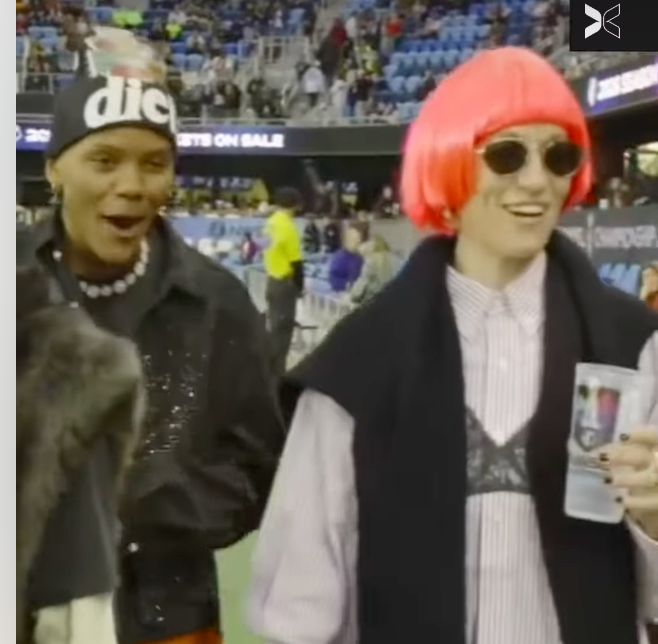
LOVE IT OR LOATHE IT, MARKETERS NEED TO MAKE PEACE WITH THE MICROBLOG SERVICE
It’s safe to say that marketers fall into three categories when it comes to microblogging platform Twitter: love, loathing and utter confusion. And right now confusion’s got the big numbers.
That will have to change, because Twitter is set to grow even bigger in the near future. Marketers will have to learn more about it, from the basic mechanics to how it may actually integrate with their current brand and direct-response efforts.
Marketing research firm eMarketer recently readjusted its forecast of the size of the twittering masses in coming years. While the firm’s best estimate says 18 million U.S. adults are using the platform today, that base will grow about 45% next year and hit 26 million users. That’s more than 15% of the U.S. population that will be on the Internet next year. It’s not e-mail numbers or even Facebook, but you can’t ignore that take-up rate.
Twitter deniers also took pleasure in recent research and coverage that suggested the platform has its limits in both demographic reach and message content. A New York Times front page article proclaimed that teens don’t Twitter and, in fact, consider it “weird.” Meanwhile, Web analysis firm Pear Analytics examined 2,000 U.S. and U.K. tweets over a two-week period and sorted them into buckets according to the nature of their content. The result: More than two-fifths of the tweets analyzed were pointless babble of the “I’m eating a sandwich now” variety.
But teen fears and useless chatter aside, brands are starting to learn how to put Twitter to work. And while those success stories may seem flukey or industry-specific, they point to some general principles that other marketers will want to keep in mind when mounting their own first forays into Twitter territory.
The state of Twitter
At a recent ad:tech Chicago discussion on “The Twitter Effect,” Performics vice president of search and performance media Craig Greenfield ran down a list of microblog successes and developments that should convince even skeptics not to dismiss Twitter out of hand. For example, Dell Outlet reported in June that offers sent out exclusively via its @DellOutlet Twitter account have brought in $2 million in revenue from followers — not counting the Twitter traffic that goes to the main Dell.com site to purchase new systems.
And Southwest Airlines launched a promotion in May that asked its 27,000+ Twitter followers to join in a photo hunt. Southwest sent out a call for a different travel-related picture every day for a week and asked entrants to tweet back their snapshots. Each picture contest would produce one randomly drawn winner of a round-trip ticket to Las Vegas and a two-night stay in an MGM property.
Southwest also made heavy CRM use of Twitter after a hole in one of its planes forced an inspection of its entire fleet back in mid-July.

On a smaller and safer scale, Greenfield pointed to Freshii, a chain of fresh-food eateries with franchises in the U.S. and Canada, which uses an @freshii account to tweet free food offers and Twitter-only discounts to their followers.
Twitter is making its presence felt in other areas of online marketing, Greenfield pointed out. Microsoft’s new Bing search engine is testing following a few thousand prominent or popular Twitter users, from Ryan Seacrest and Al Gore to tech writer Kara Swisher, and adding their most recent tweets to search results on their names. That could be the first step to a much tighter integration of Twitter and organic search.
Tweets from the coal mine
Erin Vogel, strategic director for digital agency Pixel, thinks Hollywood is tapping into some trends with Twitter that the wider world of marketers can profit from. Entertainment companies have the will to take early risks and spend money to reach consumers in experimental ways. But as those channels merge with the mainstream, best practices evolve and the costs become less risky for general marketers.
“Hollywood is really the canary in the coal mine when it comes to how to use some of these new digital resources including Twitter,” she told the ad:tech Chicago audience. “These technologies will eventually trickle down to your brand.”
For one thing, entertainment brands understand that consumers are information snackers. Late-night talk shows tweet that evening’s guest lineup on the assumption that people can’t watch (or set their TiVo to record) every show.
Consumers also like to be the first to know something. So the ABC Inner Circle uses Twitter as well as e-mail to send out information about its fall TV schedule, and Universal Studios is tweeting to fans about the new “Horror Nights” attractions it’s building in Orlando and Los Angeles.
And of course, Hollywood has used Twitter to run contests. In August, Britney Spears dropped hints on her Twitter page about where New York fans could find her, with tickets to her Madison Square Garden show for the first to arrive. Several hundred figured out that she was waiting at the Hershey Store in Times Square.
Next Page: On the job
On the job
Away from entertainment’s bright lights, Twitter gets down to work in a variety of ways. Online T-shirt retailer Threadless.com lets a stable of designers submit shirt designs, which are then put up to a weekly vote among the larger community of registered Threadless fans and followers. The shirts that win the most votes get produced and sold.
“Our business is built on ongoing dialogue with our members, so Twitter is hugely organic to us,” says Cam Balzer, Threadless marketing vice president. “It’s another way to express what it is to be part of our community.”
The company occasionally partners with brands in these design contests — for example, in a recent promotion with Volkswagen to find a T-shirt design around the notion of “pre-loved” cars. In that case, Threadless let its designer community know about the contest through Twitter. Threadless has also produced Twitter T-shirts by soliciting pithy tweets, putting them to a popular vote, and then designing the shirt around the message with the most support.
“We’re enlisting the Twitter community to help us with our products,” Balzer says. “That’s something almost any company can do.”
Threadless has 1.2 million followers right now. In part, that comes from being one of the accounts Twitter suggests to newbies as a useful or fun follow. But the company leverages that leg-up into a solid community by frequently running contests that award a free “Shirt of the Month” membership to randomly chosen followers who re-tweet — that is, forward to their own followers — a specific posting.

Besides being good for customer buzz, that re-tweet response is often strong enough to get Threadless placed on Twitter’s “Trending Topics,” a real-time list of the 10 most tweeted subjects that Twitter fans can see when they use the Twitter Web site or search page.
“I would say brands need to be participating in Twitter if people are tweeting about you, even if they don’t know you’re listening,” says Balzer. “If we find someone wishing they hadn’t bought a shirt from us yesterday because a new batch of designs came out today, we’ll send ’em a $5 gift certificate.”
The Basics: WHAT THE TWEET??
CONFUSED ABOUT WHAT TWITTER IS, DOES AND COULD BE? HERE’S A CRASH COURSe
Users sign up for an account and get a user name (@janedoe) and a profile page at Twitter.com. Once logged in on a computer or a mobile phone, users can post updates to their page in 140 characters or less — “tweets.” If these messages are meant for a specific person, they must begin with the proper “@” screen name. Otherwise, everyone who sees that update page can see them.
-
Users can go looking for friends, groups, stars and brands to follow using a “Find People” tab. Anyone they choose to follow gets an e-mail notification, and sometimes returns the favor.
Twitter’s native search doesn’t go very deep and may miss 50% of the messages. Various third-party platforms hook into Twitter and offer to look harder and deeper for relevant tweets.
-
The hashtag system (#) evolved as one way to flag content on a particular topic or intended for a specific purpose. Brands often do this to separate Twitter contest entries from other traffic.
-
You can share links via tweets. Since long links may push your message over the character limit, shrink them using a service such as TinyURL.com. And users can also share photos to Twitter by uploading them to a third-party service such as TwitPic.
-
FollowFriday has evolved this year as a weekly day to suggest interesting Twitter accounts to the world. The convention has already spawned a Web site, FollowFriday.com, which ranks the most endorsed users.
— Brian Quinton



